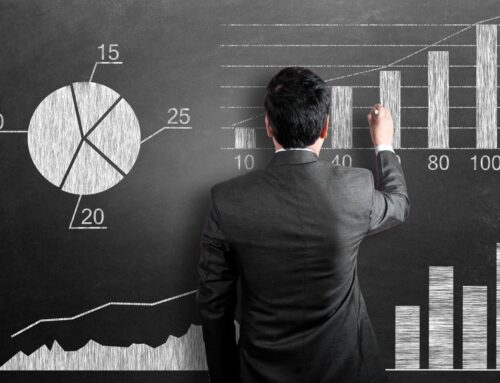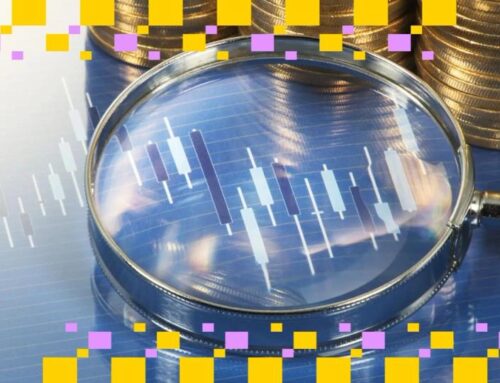The Market-Driven Clean Energy Shift—And Why Texas Matters
April 16, 2025
The energy sector is undergoing a transition toward cleaner and more sustainable sources. Deloitte’s 2025 Energy Outlook highlights key trends shaping the sector—from industrial policy influencing renewable growth to advancements in 24/7 renewable solutions and carbon management. The report also notes that record public and private investment in clean energy supported the expansion of renewables in 2024.
Sean Voigt, founder of the Austin Energy Hub and Director of EarthxCapital, said the most significant success in this sector, globally, is that clean energy has won the economic argument.
“Solar, wind and battery have emerged as the lowest cost, fastest to deploy forms of energy, hands down,” said Voigt. “We are not talking about climate change here, not talking about the environment, just talking about the cheapest and most effective way to power homes, industry, data centers, countries and economic growth.”
Voigt says this is because 90% of all new generation capacity built out over the last five to ten years globally has been clean energy.
“This is true not just in developed countries and countries with climate targets, but—perhaps most powerfully—in the emerging south, in India, in Pakistan, where there are market forces, individuals and businesses simply seeking out the best economic solutions,” he added.
“You simply cannot compete with zero marginal cost. When you combine this with the cost of battery storage, which has declined ten times in the last ten years and is only going continue this trend, you start to see how utterly dominant these technologies already are,” said Voigt.
“There really is nowhere left for conventional energy to hide,” he added.
Texas and clean energy
Texas consistently hits day-time peaks of 70-80% of total power generation – across the entire state from renewables.
“In Texas, we are blessed with an energy market that operates purely on price signals,” said Voigt. “And here in Texas, we don’t care what you build – gas, nuclear, coal, solar – or where you build it, we just say, if you build the capacity, we will connect it to the grid, and we’ll buy those electrons from you if they are the cheapest electrons we can buy.”
“We have no state policies pushing or subsidizing clean energy – if anything, this is an antagonistic environment for clean energy,” he added.
“Yet renewables are dominant in Texas, the largest energy market by a factor of two and a half times and set to nearly double again in the next five years,” said Voigt. “Why? Because Texas operates its grid according to Texas values – free market and minimal bureaucracy. And, in a world where technologies have to compete and time to market, clean energy is unstoppable.”
According to Rebecca Kacaba, CEO and co-founder of DealMaker, Texas is ground zero for the clean energy economy.
“And that surprises people because they assume it’s all oil and gas. But if you actually look at the data, Texas is number one in solar, number one in wind, and is about to become number one in battery storage too.”
In 2023, Texas generated approximately 119,836 GWh of wind energy, the highest of any U.S. state. The state had more than 15,300 wind turbines, the most in the country. Wind power accounted for 28.6% of Texas’s total energy generation in 2023. Wind generation in Texas has nearly tripled since 2014.
Kacaba adds that those numbers are not policy-driven — they are market-driven.
“Price signals alone are dictating this shift. That’s what’s so compelling,” said Kacaba. “It’s not just happening — it’s competing and winning in the open market. Texas is already running on 30% renewables year-round and hitting 80% on some days.”
“That tells you where they’re headed. I think founders and investors need to watch Texas closely because what happens there will shape the future of energy across North America,” said Kacaba.
A shift to distributed energy
Kacaba says distributed generation is going to scale fast. “Think modular, localized power instead of relying on massive centralized plants. And the entire battery ecosystem is going to evolve quickly too, especially as data centers and AI demand more and more power.”
“We going to see new forms of energy storage, new models for how power is generated and sold, and new ways for consumers to be part of that system,” she added. “And as battery tech improves, we will finally see explosive growth in EVs and EV infrastructure.”
“This isn’t theoretical anymore. What we haven’t caught up on yet is giving founders in those sectors the right capital tools to grow with that demand,” she said. “Retail investors have a strong appetite to see these ideas come to fruition.”
Portable green distributed energy
Thomas Healy, CEO and co-founder of Hyliion, an Austin-based clean tech company, says the real shift needs to happen in how we think about energy infrastructure.
“For decades, power has been centralized—generated far away and pushed through a grid that wasn’t designed for the kind of demand we’re seeing today,” said Healy. “It is becoming clearer that trillions of dollars in new investment is required to modernize the grid, and it will take decades to achieve.”
“This is resulting in a significant shift toward localized, on-site generation as the new normal,” he said. “That means designing facilities with localized power generation as part of the core architecture, not always as a backup.”
Healy says the main challenge to distributed energy is that while it’s essential for resiliency—especially with increasing grid instability—the technologies are outdated.
“Most distributed systems are built around diesel or natural gas generators that are noisy, polluting, and limited in terms of fuel flexibility,” said Healy. “They also require a lot of maintenance and aren’t designed for a world that’s prioritizing resilience, sustainability and rapid energy access.”
Healy says that if distributed energy is going to be part of the solution in the long term, it has to evolve. “It can now be cleaner, more efficient, and adaptable to different use cases and fuel sources,” said Healy. “We believe power generation needs to become decentralized, resilient, and closer to the point of use.”
As part of its approach to distributed energy, Hyliion says we have to rethink power generation. They have done this with the KARNO Power Module—a portable, clean generator that integrates mechanical, chemical, and power electronics technologies alongside advances in metallurgy and manufacturing.
“KARNO builds on the foundational work of the Stirling engine and the principles behind the Carnot cycle—which is the gold standard for converting heat into work efficiently,” said Healy. “What makes the system different is that it uses a proprietary flameless oxidation process to generate heat, so instead of relying on traditional combustion, which produces a lot of harmful emissions, we oxidize the fuel in a much more controlled and efficient way.”
Healy says it’s quieter and cleaner and designed to work with more than 20 different fuel types, including hydrogen, natural gas, and biogas.
The company uses additive manufacturing (3D metal printing) to build key components of the system.
“These parts are incredibly complex, and 3D printing lets us produce them with a level of precision and efficiency that wouldn’t be possible using traditional manufacturing methods,” said Healy. “Even material selection is key to building a system that is capable of operating on a wide range of fuels and application conditions.”
Clean energy investment
Siddhant Masson, CEO and co-founder of Wokelo AI, says the company analyzed more than 1,600 climate-related fundraises from 2021 through 2025 and found that private equity (PE) is outpacing venture capital in funding climate tech.
“If we look back at 2021, private equity funding was lower than total VC funding (across all stages), but in just the past few years, PE investment has steadily grown and now surpasses VC,” said Masson. “I also see that this gap is continuing to widen.”
Masson says that these two funders are investing in completely different ways.
“Most of the PE-funded deals are concentrated in the power and energy space, focused on large-scale renewables and clean energy projects,” said Masson. “Venture capital, meanwhile, is much broader in scope and covers innovative concepts across energy, biotech, building materials, information and analytics services, consulting, ag-tech, blockchain, mobility (EVs, ridesharing), waste management, and food tech.”
Kacaba says we have passed the tipping point for cleantech investment.
“The real shift now is in how capital is deployed,” said Kacaba. “We’re no longer talking about whether clean energy is viable — the economics have settled that debate. Wind, solar, storage — they’re already cheaper, faster to deploy, and in many cases more reliable.”
“What’s catching up now is the infrastructure around investment itself,” she said. “The financial models, the capital stacks, the routes founders take to raise money — that’s where the innovation needs to happen next. So yes, we’re past the tipping point in terms of technology and demand; now the focus is on modernizing the way capital moves and who gets access to invest.”
“If an investor hasn’t taken a close look at this space in a few years, their take on it is obsolete,” added Voigt. “So there is a basic barrier around understanding the $50 – $100 trillion opportunity that is going to unfold over the coming decades.”
“What I find promising is that many of the investors staying in the game right now are playing the long game,” said Masson. “They understand and accept that these investments will not bring them quick exits. They choose to put their effort into building infrastructure for the future – solutions that will be essential tomorrow.”
The clean energy promise
Healy says distributed energy moves us toward a future where energy is no longer something you passively receive from a distant power plant—but something you control right at the point of use.
“Innovations like ours give businesses and communities the ability to generate their power in a cleaner, more efficient, and more resilient way,” said Healy. “That shift unlocks new possibilities—not just for decarbonization, but for energy access, reliability, and independence.”
Healy says that, over time, that will fundamentally change how society thinks about power—making it more local, more flexible, and more aligned with the pace of innovation across every other industry.
Voigt says clean energy is not about climate change or a niche altruistic goal to save the planet but the economic and technological future upon which the strength of nations and empires will be built in the century to come.
“Energy is power. Technology is power. Economic growth and trade drive geopolitics,” said Voigt. “The nations that harness and own these technologies and supply chains will own the geopolitics of the next century.”
“Just as the oil industry, the automobile and the semiconductor fueled America’s rise to dominance as a global super power in the 20th century, the countries that own clean energy will own the 21st century – on the battlefield, in global commerce and trade, in soft power,” added Voigt.
Voigt says the national champions of the next century are being built right now—the equivalents of Ford Motor Company, General Electric and Exxon.
“Do we want these companies to be built in the U.S. or China? America’s very relevance on the global stage is being decided right now,” he said. “This is about national security, energy independence, military superiority.”
“This is about rural economic development. This is about onshoring good-paying, blue-collar jobs. This about American ingenuity and grit,” added Voigt.
“Clean energy is not about climate change; it is not about a niche altruistic goal to save the planet,” said Voigt. “Clean energy is the economic and technological future upon which the strength of nations and empires will be built in the century to come.”
Search
RECENT PRESS RELEASES
Related Post




